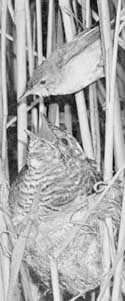 |
 10th May 1998 |
Front Page| |
|

|
|||
Stamp News 15 The spirit of VesakBy Uncle D.C.R.Since 1978 Vesak stamps are being issued every year. These have cap
tured the spirit of Vesak by The three stamps issued in 1979 featured paintings from the Kelaniya
temple done by the famous artist Soliyas Mendis. The 25 cent stamp depicted
how Prince Dantha and Princess Hemamali brought the Sacred Tooth Relic
of the Buddha to Sri Lanka during the reign of Sri Meghawanna The year 1985 marked the completion of a hundred years after the declaration of the Vesak Full Moon Day as a Public Holiday in Sri Lanka. The six coloured Buddhists flag (Rs. 9), the Buddhist Theosophical Society (BTS) headquarters at Olcott Mawatha, Pettah, one of the key places responsible for the Buddhist revival (Rs. 6), a group of devotees at a temple (60 cts) and the cover page of the Golden Jubilee edition of 'Vesak Sirisara', the international Buddhist annual (35 cts) were featured in the four stamps. Decorative lanterns of various shapes, colours and sizes form an integral part of Vesak celebrations. The 1987 Vesak stamps (four) depicted four types of lanterns - lotus (50 cts), octagonal (75 cts), star (Rs. 5) and gokkola (Rs. 10).
Like a woman's mindI am drowning in the water Fazeena Zahir,Gampaha.
Parasites and partnershipsAnimals normally live together as separate families,
or in groups, such as a herd of deer, a flock of sparrows, or a shoal of
fish. Sometimes there is a partnership between two quite different animals.
For example, a sea anemone sometimes attaches itself to the shell of a hermit crab. The crab is then protected by the anemone and the anemone picks up spare food which is wasted by the crab. In tropical areas, several kinds of birds settle on the backs of large animals such as antelopes, buffalo and giraffes. The birds feed on ticks and other nuisances in the animal's skin and at the same time help to keep the animals clean. Other birds find food by entering the open mouths of crocodiles to clean worms from their teeth. In return the birds raise the alarm when there is any danger. Symbiosis In some cases the partnership is so close that one partner cannot live without the other. This is called symbiosis. Lichens are made up of two closely knit plants — an alga and a fungus. The green alga makes the food, and the fungus reproduces. Lichens are often found growing on bare rocks and gravestones. Animals like cows which chew the cud have minute animals living inside their stomachs. They carry out a very important function for the cows by breaking down the cellulose which occurs in plant cells. Cows cannot do this. They rely on the microscopic animals in their stomachs to soften the plant food when it is first swallowed. Later, the cows cough up lumps of food (the cud) into their mouths, chew it thoroughly, then swallow it for the second and last time. In this way, all cud-chewers, including many farm animals, obtain the maximum goodness out of their food. Another partnership occurs in the simple freshwater animal called a Hydra which is a kind of miniature anemone. Tiny algal plants live inside its tissues. The Hydra gives shelter to the algae, and the algae provide the Hydra with oxygen. Parasites In other partnerships life is very one-sided. Only one partner benefits. The partner that thrives is called a parasite and it lives at the expense of its host. Many worms live inside animal bodies and live off the animals' food. Fleas feed on blood. Some toadstools and mistletoe are parasitic tree-dwellers. As long as there are not too many parasites living off the one host, no harm is done. If they become too numerous, or even enter the wrong host, sickness may result, even death. Germs spread by the malaria mosquito and the rat flea may become killers. Yet the mosquito and flea are usually unharmed. A parasite may spend all its life inside the same host. Its body is usually pale and it has no legs. It attaches itself to its host with hooks or suckers and is constantly bathed in food. It lives only to feed and lay eggs. Many parasitic worms live this way. Several hosts With some worms there may be more than one host. A tapeworm inside a human lays eggs which pass out of his body. A pig may happen to pick up an egg along with its food and swallow it. The egg turns into a larva which grows in the flesh of the pig. Later, the pig may be killed and eaten by another human who in turn acts as host to another tapeworm. And so the cycle continues. Today, few humans have tapeworms because our waste is disposed of through the toilet. Also, government health agencies check samples of the meat we buy from shops to make sure it does not carry worms. The liver fluke also has two hosts. It attacks the liver of sheep, where it lays eggs. As each egg is passed out of the sheep's body, it turns into a swimming larva which enters the body of a water snail. There, the larva passes through several stages in development before it leaves the snail, climbs up a grass stem, and forms a hard covering or cyst. A sheep may eat this grass and, once again, a fluke will attack the sheep's liver. The way to control the spread of liver flukes is to get rid of the second hosts — the snails. Sheep should also be kept away from wet pastures. Cuckoos Among birds the cuckoo behaves as a parasite. The female cuckoo seeks out the nests of other birds where eggs have already been laid. When the parents are away it slips down, lays an egg, and removes one of the others. The baby cuckoo will eventually get the nest to itself, by tipping out all the eggs and any young that have already hatched. Although the cuckoo is far bigger than its foster parents, they will continue to feed it as if it were their own offspring. Each parent cuckoo chooses the same kind of bird's nest for its egg, such as that of a hedge sparrow, robin or warbler. The interesting thing is that the cuckoo's eggs usually match the colour and markings of the other eggs in the nest. |
|||
 |
Return to Mirror Magazine Contents
|
||
 |
Please send your comments and suggestions on this web site to |
||
 depicting
significant events related to Buddhism. Most of them have featured rock
and temple paintings depicting Jataka tales or incidents from Buddha's
life story. These stamps have become a rich and valuable collection among
philatelists since they depict our national heritage.
depicting
significant events related to Buddhism. Most of them have featured rock
and temple paintings depicting Jataka tales or incidents from Buddha's
life story. These stamps have become a rich and valuable collection among
philatelists since they depict our national heritage. (303-331
CE). The theme of the Rs. 1 stamp was how Theri Sanghamitta brought the
Sri Maha Bodhi during the reign of King Devanampiyatissa (3rd Century BC).
King Kirti Sri Rajasinghe (1747-1780) handing over the Vijinipatha (ceremonial
fan) to Venerable Velivita Sri Saranankara Thera signifying his appointment
as the Sangha Raja was featured in the Rs. 10 stamp. The world renowned
George Keyt paintings at the Gotami Vihara, Borella were featured in four
stamps released for Vesak in 1983. Queen Mahamaya's dream when she conceived
Prince Siddhartha (35 cts), birth of Prince Siddhartha in Lumbini (50 cts),
the renunciation (Rs. 5) and leaving the palace with minister Channa on
Kanthaka's back (Rs. 10) were the selected paintings.
(303-331
CE). The theme of the Rs. 1 stamp was how Theri Sanghamitta brought the
Sri Maha Bodhi during the reign of King Devanampiyatissa (3rd Century BC).
King Kirti Sri Rajasinghe (1747-1780) handing over the Vijinipatha (ceremonial
fan) to Venerable Velivita Sri Saranankara Thera signifying his appointment
as the Sangha Raja was featured in the Rs. 10 stamp. The world renowned
George Keyt paintings at the Gotami Vihara, Borella were featured in four
stamps released for Vesak in 1983. Queen Mahamaya's dream when she conceived
Prince Siddhartha (35 cts), birth of Prince Siddhartha in Lumbini (50 cts),
the renunciation (Rs. 5) and leaving the palace with minister Channa on
Kanthaka's back (Rs. 10) were the selected paintings. There
are many reasons for forming a partnership, but it almost always benefits
both animals.
There
are many reasons for forming a partnership, but it almost always benefits
both animals.